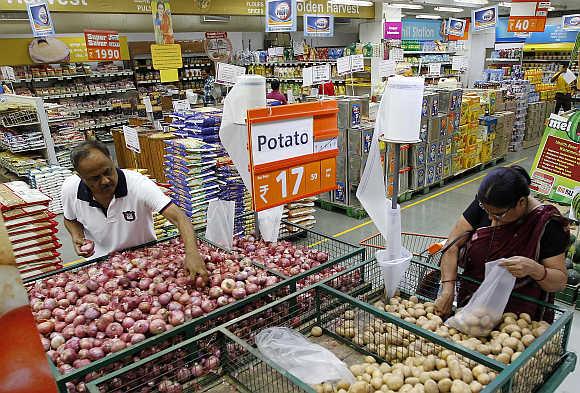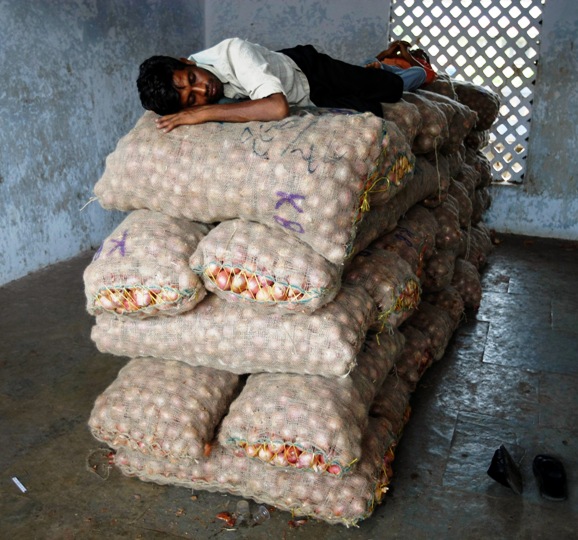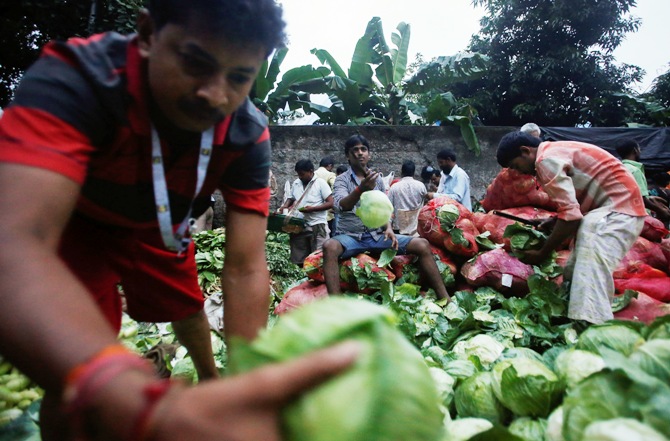 | « Back to article | Print this article |
Twin devils that have eroded the Indian economy
The twin devils plaguing the economy – of low investment and high food inflation – have not yet been slain.
The Union ministry of statistics and programme implementation on Tuesday released two important sets of recent data: the index of industrial production (IIP) for September 2013 and the consumer price index (CPI) for October 2013.
The overall picture that the two pieces of data suggest is that the Indian economy is still in trouble. The twin devils plaguing the economy – of low investment and high food inflation – have not yet been slain.
While it is true that the IIP itself has grown two per cent over its level in the corresponding month of 2012, that fact conceals as much as it reveals.
It is important to note that the September 2012 IIP was a significant negative surprise, coming in at -0.4 per cent as opposed to the market’s consensus expectation that it would grow by 2.5 to three per cent.
Click NEXT to read more...
Twin devils that have eroded the Indian economy
Thus, a low base helped it pose what would otherwise appear to be a reasonable increase. It is worth noting that its month-on-month growth is far less impressive, at 0.5 per cent. And the overall growth for industry in this financial year so far is 0.4 per cent.
Importantly, both capital and intermediate goods shrank month on month — capital goods, in fact, have shrunk 14 per cent over the last two months for which data are available.
This indicates that the investment slowdown is still very much around. Consumer durables shrank year on year, which could suggest to observers that spending confidence is yet to return to the economy.
Thus, the IIP cannot be read as good news, or as providing a sight of the green shoots of recovery.
Click NEXT to read more...
Twin devils that have eroded the Indian economy
Meanwhile, the CPI brought further bad news. The CPI edged into double digits in October, growing at 10.09 per cent year on year as opposed to 9.84 per cent year on year for September 2012.
This continued to be driven by high food inflation, which was 12.56 per cent year on year overall, and almost 13 per cent in urban areas. That figure, too, was essentially driven by a startling 41 per cent increase in the price of vegetables.
Proteins and cereals also grew in double digits, but it is clear that vegetable prices, in particular, are driving the overall inflation numbers. Clearly, the combination of increasing demand for vegetables and supply-chain inadequacy that has long plagued this sector is yet to be solved. In fact, the problem is getting worse.
Click NEXT to read more...
Twin devils that have eroded the Indian economy
That it has to do with the storage and transportation of perishable food items is clear from the fact that the second-highest increase in prices sectorally came from fruit, which has similar supply-chain and demand characteristics to those of vegetables.
The pressure on the government, therefore, is twofold. It must, on a war footing, work out ways to fix the food supply chain in the short to medium term.
Only once that is done will it be possible to revive industrial growth and investment, which is interest-rate sensitive. The bottlenecks have been made crystal clear. When will action be taken?




